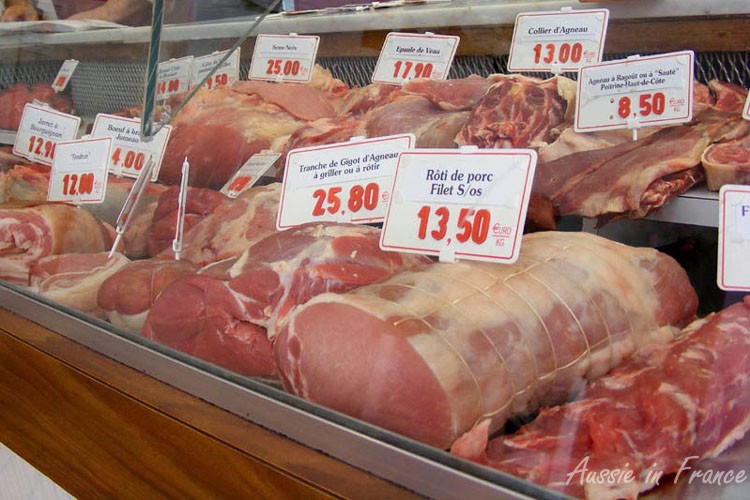Susan Walter from Days on the Claise was wondering recently about the use of gigue and gigot when referring to a leg of venison or lamb.

I was not aware of the term gigue as I don’t often buy venison! So I checked on the etymology and learnt that it comes from Old French gigue (1120-1150) meaning a musical instrument with 3 strings, which in turn comes from high German giga, a stringed instrument.
The shape of the instrument appears to have led to the use of gigot to describe a leg of deer or lamb which was then used jokingly to describe a person’s leg, particularly when dancing as in remuer le gigot, literally to shake a leg which, in English, of course, means to get a move on.
There seems to be no real explanation for the modern use of gigue instead of gigot in the case of venison (gigue de chevreuil), first attested in 1838, while gigot is reserved for lamb and mutton.
The term gigot also appears in the expression manches à gigot to describe mutton-leg sleeves which were first seen in the 1820s and early 1830s. By the time Queen Victoria ascended to the throne in 1837 however, they had completely disappeared in favour of a more subdued style. They came back in again towards the end of her reign in the 1890s more overblown than ever – much to the ridicule of the media – until 1906 when the fashion once again changed.
Although it looks very similar, gigoter is a bit more complicated. Gigoter means to wriggle around. You’d use it for a baby moving its arms and legs all the time, for example, or a little child who can’t stay still:
Il n’arrêtait pas de gigoter dans mes bras – He wouldn’t stop wriggling when I picked him up.
Arrête de gigoter. Il faut manger maintenant. – Stop wriggling about. It’s time to eat now.
Etymology-wise, there are two possibilities. It is either a derivative of gigot or it comes from the Old French verb giguer meaning “to kick” (1694) or “to move its legs around” (1718, when speaking of an animal in agony). It also used to mean “to dance” but has lost that meaning now. Guincher, which is slang for “to dance”, may be derived from the same word though.
Which (naturally) makes you think of jig, a form of lively folk dance which developed in 16th-century England, and was quickly adopted on the Continent where it eventually became the final movement of the mature Baroque dance suite (from French gigue; Italian and Spanish giga).
My apologies to Susan for not coming up with a better explanation!




I can’t remember it being used in Canadian French, but there are different nuances in the language from the continental French.
Yes, I imagine there are lots of differences, though some 18th century expressions and words remain, I am told.
No wonder no one in the butcher’s knew the answer as to why a leg of venison was une gigue but a leg of lamb was un gigot when I asked them! 🙂 The even more intriguing question is why does gigue only apply to roe deer venison (chevreuil) and not red deer venison (cerf or biche), where a leg is referred to as un cuissot. The best answer we could come up with in the butcher’s was that hunters are a sort of breed apart and have adopted lots of very specific words not used in every day language.
Btw, I first heard the word gigue when watching an episode of Les Carnets de Julie about game. She kept referring to the joint of venison being cooked in one part of the programme as une gigue. At first I thought she was using some trendy abreviation, but then I realised it must be specific to venison. As far as I recall there was no explanation in the programme, she obviously just assumed that foodies watching the programme would know the word.
I highly recommend Les Carnets de Julie for intermediate French speakers like myself. It’s a great programme for practicing listening comprehension, especially if you are interested in French traditional food and drink. I’ve learnt a lot over the years from Julie. All the episodes are on YouTube if you want to watch them.
Now I’ll have to add a paragraph about cuissot which is like our haunch.
I checked out Les Carnets de Julie on YouTube and it does seem good for intermediate French speakers – except when she interviews the locals with their strong accents and patois words!
Sorry if it were here that I mentioned the ‘gigot of lamb’ being offered at our local resto as ‘souris d’agneau’. The smaller end I suppose.
Now the “souris d’agneau” is not the leg as such, but the knuckle joint. It’s something I particularly like and is very easy to cook in the oven. It’s also more suitable for smaller numbers than a leg of lamb. You don’t always see them in the butcher’s but if you ask for them to set aside a couple, they always will.